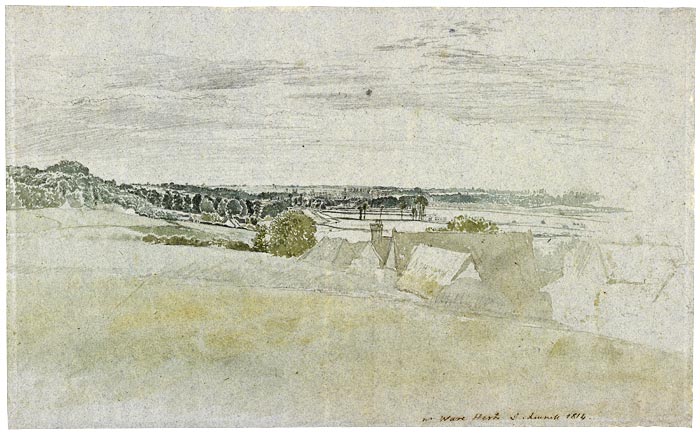
In 1805 Linnell entered the Royal Academy Schools, where he became a pupil of John Varley, who encouraged his students to draw directly from nature. The simplicity and purity of Linnell's observations are evident in this delicate watercolor, which was commissioned by Samuel Bagster to illustrate his 1815 edition of Izaak Walton and Charles Cotton's The Complete Angler, or Contemplative Man's Recreation.
II. Friends and Followers
Among Blake's early friends were professors and other students at the Royal Academy, many of whom became leading figures of the age. He frequently engraved works by Thomas Stothard, Henry Fuseli, and John Flaxman, for example, as will be seen in this gallery. In his day Blake was more widely esteemed as a fine engraver than as a painter, his own imaginative work having been produced primarily on speculation or for patrons. Only nine years before Blake's death, the young artist John Linnell (1792–1882) became both a patron and friend. Through him Blake became acquainted with several youthful artists who came to call themselves the Ancients, after Blake's frequent reference to earlier artists as "ancients." They were inspired by Blake's imaginative spirit and his love for the art of Michelangelo as well as for the poetry of Milton. These men––Edward Calvert, Samuel Palmer, George Richmond, Francis Oliver Finch, George Cumberland, Frederick Tatham, and Henry Walter––are represented in the Morgan's collections.
